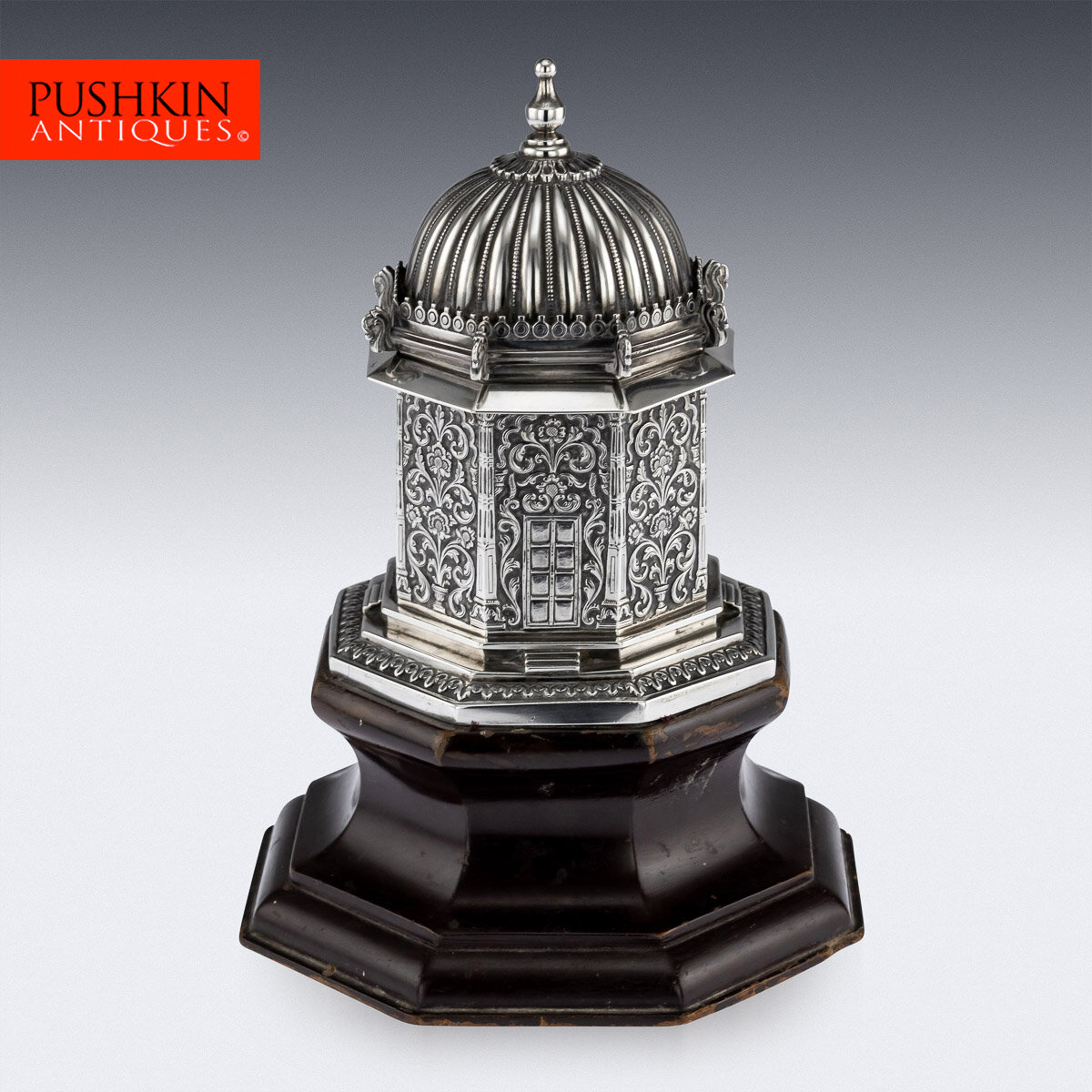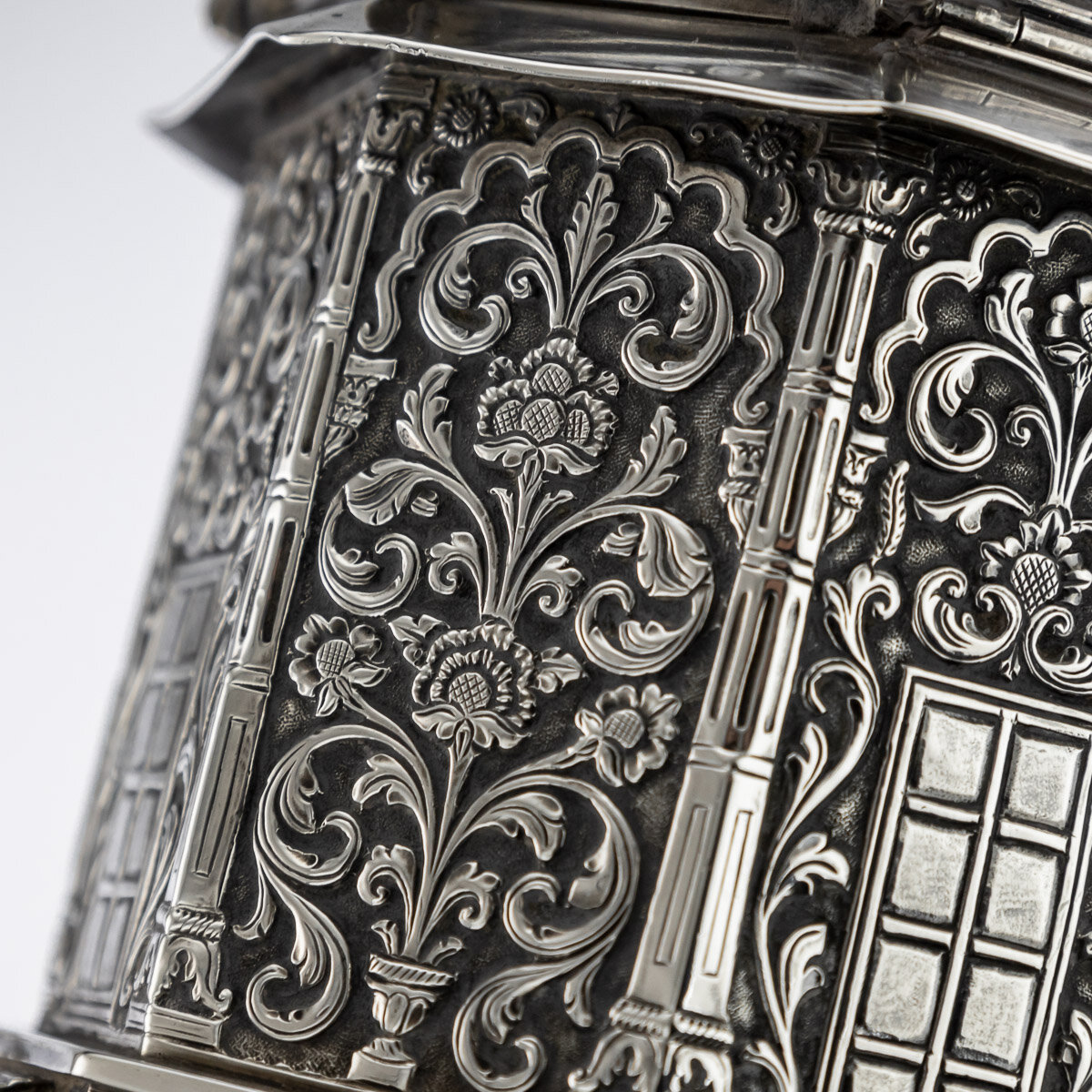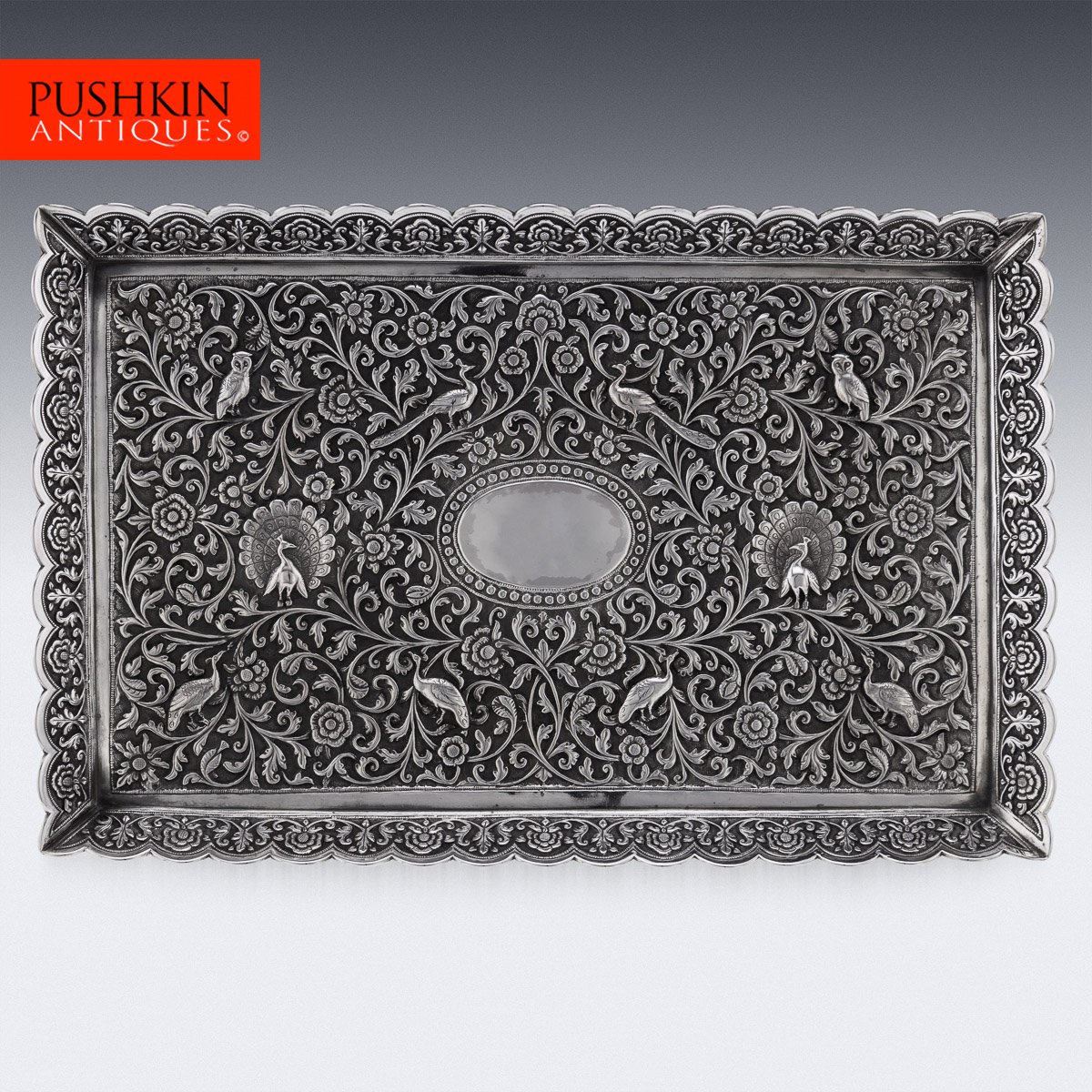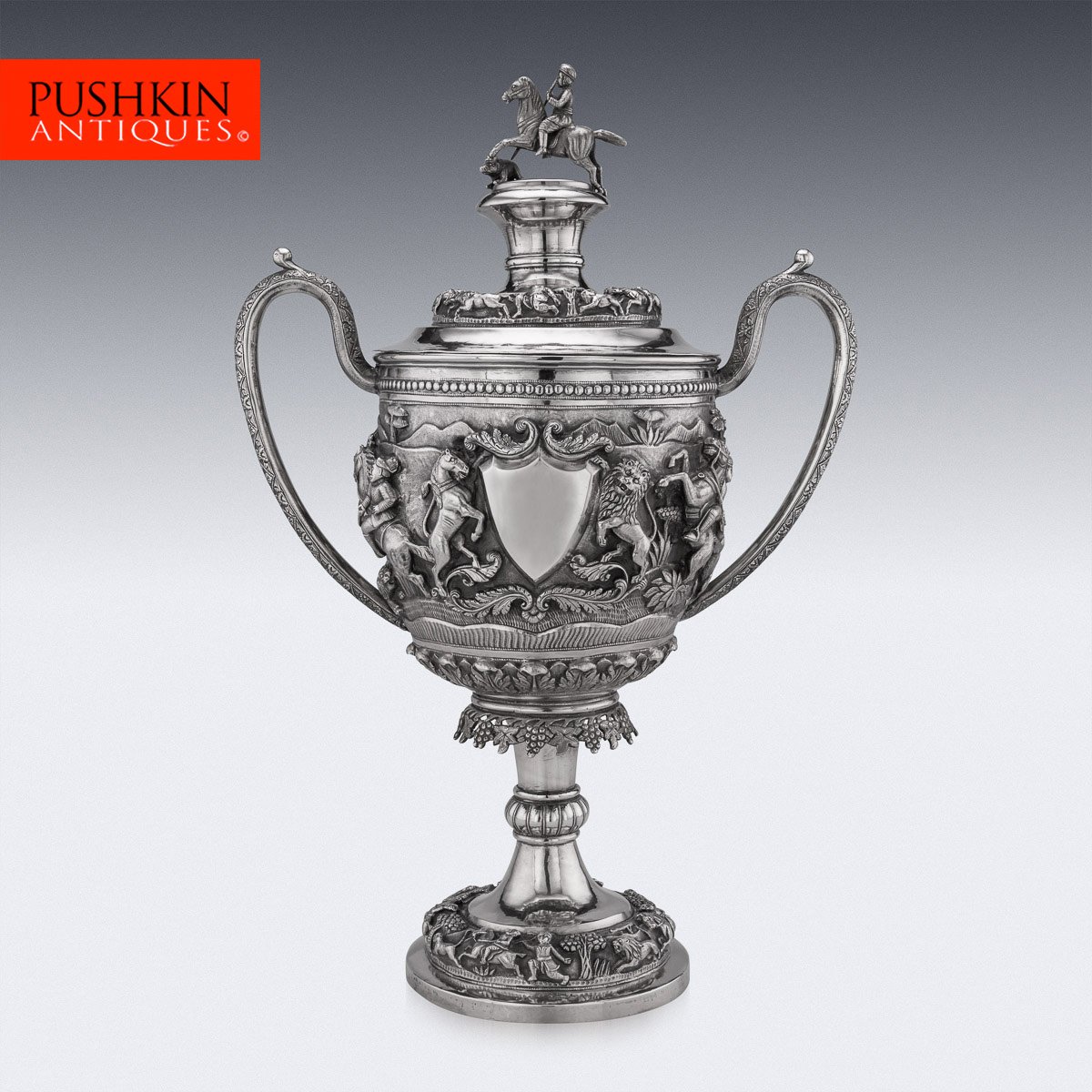ANTIQUE 20thC INDIAN SOLID SILVER TEMPLE SHAPED TEA CADDY, OOMERSI MAWJI c.1920
20th Century Indian Colonial silver tea caddy on stand shaped as a small Hindu courtyard temple. Of octagonal form on a stepped foot, highly chased and embossed, decorated with floral sprays and scrolling vine within cusped arches on a finely stippled ground, alternating sides with a doorway and steps below and a pilaster on each corner.
The base stamped "Oomarsee Baroda", on octagonal wooden presentation base.
Reference Number: A6396
DESCRIPTION
Antique early-20th Century exceptionally rare Indian Colonial solid silver tea caddy on stand shaped as a small Hindu courtyard temple. Of octagonal form on a stepped foot, highly chased and embossed, decorated with floral sprays and scrolling vine within cusped arches on a finely stippled ground, alternating sides with a doorway and steps below and a pilaster on each corner. The hinged domed and gadrooned lid surmounted with a flowerhead and a piriform shaped finial, with balustrade and cantilever below, each corner applied with a serpentine bracket. The base stamped "Oomarsee Baroda", on octagonal wooden presentation base.
Hallmarked 'O.M Baroda' for Oomersee Mawji Jr, this exceptional silversmith is undoubtedly one of the most celebrated Indian silversmith of all time. The inventiveness and the spotless quality of his works had no rivals in Kutch and his pieces are still sought after worldwide.
Oomersee Mawjee Jr. (1920-1930) was a master silversmith in the employment of the Gaekwad of Baroda (fig. 3, Dehejia, cit. loc.). Maharaja Sayajirao Gaekwad III (1863-1939) was a noted patron of arts, and during his reign Baroda became a hub for artists and scholars. Even the celebrated painter, Raja Ravi Varma, moved to his court during this period. He amassed an impressive collection of jewels, jewellery and silverware.
"Working the silver with ingenious skill and patience, Oomersi Mawji and his son Oomersi Mawji jr raised the quality of decoration on Cutch silver to an art form" (Wynyard R. T. Wilkinson, Indian Silver 1858 - 1947: Silver from the Indian Sub-continent and Burma Made by Local Craftsmen in Western Forms, London, 1999, p. 69). The firm’s very high quality silver pieces, often featuring witty and amusing details, became soon very much appreciated overseas, selling through the two branches of Calcutta and Bombay.
In 1878 Oomersi Mawji and his sons participated to the Exposition Universelle in Paris. Their fame grew worldwide and their artworks became very expensive. In London, the brand was retailed by Liberty & Co. and Proctor & Co. When the father died, around 1890, his sons took over the business, which definitely ceased activity around 1930. Artworks manufactured by Oomersi Mawji & Sons are nowadays part of the collections of international museums such as the Victoria & Albert Museum in London.
CONDITION
In Great Condition - No Damage.
SIZE
Height: 27cm
Width: 13cm
Silver Weight: 610g























